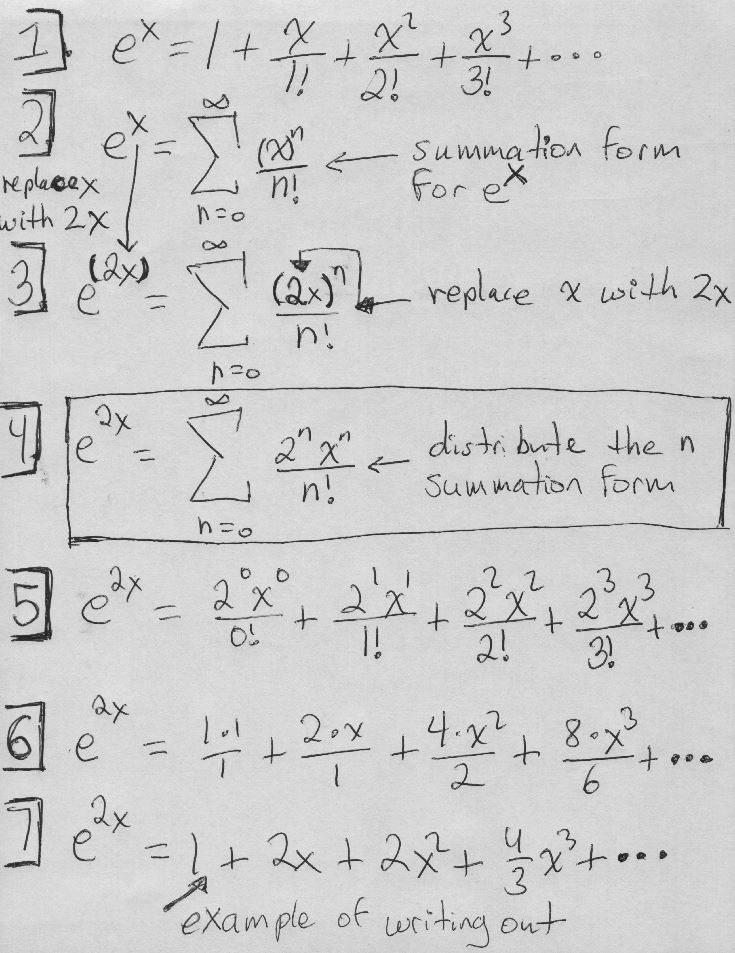
Deriving the Power Series for \( e^{2x} \) from \( e^x \)
This guide explains how to derive the power series for \( e^{2x} \) starting from the Taylor series expansion of \( e^x \).
Step 1: Taylor Series for \( e^x \)
The Taylor series expansion for \( e^x \) is:
\[ e^x = \sum_{n=0}^{\infty} \frac{x^n}{n!} \]
Step 2: Substitute \( x \) with \( 2x \)
To find the series representation for \( e^{2x} \), we replace \( x \) with \( 2x \) in the above series:
\[ e^{2x} = \sum_{n=0}^{\infty} \frac{(2x)^n}{n!} \]
Step 3: Simplify
Simplifying, we get:
\[ e^{2x} = \sum_{n=0}^{\infty} \frac{2^n \cdot x^n}{n!} \]
Conclusion
By substituting \( x \) with \( 2x \) in the Taylor series expansion of \( e^x \), we have successfully derived the power series for \( e^{2x} \).
First Few Terms of the Power Series for \( e^{2x} \)
This guide provides the first few terms of the power series representation for \( e^{2x} \).
First Few Terms
The first few terms of the power series for \( e^{2x} \) are:
\[ 1 + 2x + \frac{4x^2}{2!} + \frac{8x^3}{3!} + \frac{16x^4}{4!} \]
Conclusion
These are the first few terms of the power series for \( e^{2x} \), which give us an approximation of the function near the origin.
Graph of \( e^{2x} \) and Its First Six Terms in the Power Series
This guide provides a graph that compares the function \( e^{2x} \) with its first six terms in the power series expansion.
Graph
The graph below shows \( e^{2x} \) and its first six terms \( 1 + 2x + \frac{4x^2}{2!} + \frac{8x^3}{3!} + \frac{16x^4}{4!} + \frac{32x^5}{5!} \) plotted from \( x = -2 \) to \( x = 2 \).
Conclusion
The graph provides a visual comparison between \( e^{2x} \) and its first six terms in the power series, helping to understand how well the series approximates the function near the origin.
